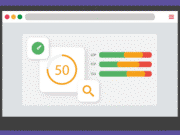Article Note: This article “16 Fantastic SEO Tips for Bloggers to Drive Traffic More” was first published on February 23, 2018. We last updated this article with fresh information on October 11, 2022.
A wide range of purposes may be served by creating a web page. It might be that you’ve created a fantastic product and are now ready to sell it online. Maybe you want to tell the world about your favorite pastimes. This will be for nothing if no one comes to your website.
With SEO, you can make sure that your site shows at the top of search engine results pages when someone types in a search phrase, regardless of whether it is hosted on a shared, virtual private server (VPS) or dedicated server (DS). So, you’re probably thinking about how to attract more people from search engines like Google to visit your website. We’re here to assist, so don’t worry.
To learn more, keep reading.
SEO and your blog

On-page SEO such as using H tags, adding ALT text to images, and things such as adding meta titles, descriptions, and keywords are still relevant these days. However, the most important thing for SEO (Search Engine Optimization) these days is your blog’s popularity, relevance, and use (in that order). On-page SEO matters in the same way that getting your car serviced matters. Your car will still run if you do not get it serviced, it just won’t run as well. The same is true of your on-page SEO where your website will fair well without optimized pages, but just not as well as it could if the pages were optimized.
Off-page SEO is no longer relevant. Instead of an off-page SEO campaign, you need only concentrate on gaining suitable exposure for your blog and making your blog more popular. Instead of worrying about SEO, concentrate on making your blog popular, making your blog posts relevant to your readers, and on making your blog posts useful.
Here are 16 tips that double over as SEO tips because they will all help bloggers rank up the Google search engine results pages.
Recommended for you: 10 Tips to Optimize Your Blog Posts from Good to Great.
1. Create a stunning website

Search engines use this to crawl quickly and index web pages, videos, and audio. It is a text file — a sitemap generator provided by Google. You may also provide links to recent articles and notable writings. Visitors and search engines both benefit from these acts.
It’s essential that your website’s title field, which displays in search engine results, condense everything down to the site’s name and relevant keywords. As a result, you must exercise caution while deciding on your website’s name and keyword phrases.
If your website seems shabby, visitors will click away, never return, and instead go for a rival with a more polished appearance. Visitors, external connections, social media buzz, and money are all lost. The website builders we propose provide you with the resources you need to create an appealing and helpful website swiftly.
2. Concentrate on the most valuable and most relevant keywords

A solid SEO approach begins with thorough keyword research. The first step is to determine the primary and secondary keywords that will be used to optimize your page.
Your content’s efforts should be directed toward achieving the primary keyword you choose. Just choose one main term for each page. It should be related to the topic of your website, your company’s image, offerings, and target audience.
Secondary keywords help to support the primary theme. More specific than a single keyword, they reflect specific areas of interest within a more prominent subject. Incorporate them organically, but don’t overdo them if they don’t work.
3. Enhance your keyword strategy

The next step after selecting your keywords is to use them. To better grasp the content of your page, Google’s spiders scan for keywords as they navigate your site. If you include long-tail keywords across your site, you’ll improve your ranking in search engine results.
Your viewers will also benefit from including relevant keywords in your material. In this way, they will be able to properly assess if the information on your website corresponds to what they are looking for.
Search engine optimization may be improved in various ways (SEO). Search engine rankings may be enhanced by using your keywords in these locations. Adding keywords requires a certain amount of prudence. While the keyword should not be forced, it should be utilized naturally as you compose your pages.
4. Plan your website’s content

By creating a content strategy, you’ll be able to come up with many relevant themes for your website’s unique pages.
SEO content strategy requires several steps, including the following:
- Please make a list of subjects you want to explore more and write pages about them.
- Create a list of long-tail keywords based on these themes.
- Each subject should have its page on your website.
- Organize your subjects into topic groupings.
- Sitemaps may serve as blueprints for the web page content.
It is much simpler to plan out and arrange your site for search engines, develop subject clusters, and target the relevant keywords when you clearly know what your pages will be about.
5. Write high-quality content

Quality content that’s unique, thorough, and evergreen is essential if you want visitors to discover and return. Search engine optimization (SEO) and unique, trustworthy content are the best ways to get more traffic. To put it another way, this implies that the information you provide is comprehensive and covers all the bases a user would have on a particular subject. You may demonstrate to search engines that you’re an expert in the subject matter by creating comprehensive sites.
6. Long-term value beats short-term gains

Most social media platforms reward profiles that post frequently. This means that as a blogger it is in your interest to post things to your social media profiles on a regular basis. However, overly frequent posting often leads to poor-quality content that lacks value. The SEO/popularity value of your social media profiles may be fleeting if you are posting poor-quality content.
Lower-value blog posts may experience a short-term popularity (and search engine) boost if they are promoted through your social media efforts, but the gains are short-lived if your blog posts lack value.
Think in terms of convincing people to come back to your blog post. Forget about trying to attract more and more people with your blog posts and focus on what will make your readers return for your next post. After each blog post, ask yourself what it is about that post that would convince people to return to your blog. Ask yourself what you have contributed to the topic.
You may like: How to Create a Blog: Tips for Successful Bloggers!
7. Updating your old blog posts is a big Google pleaser

If you have been running a blog for a long time, you may have noticed that your updated blog posts seem to do a little better each year. You may think this is because your blog has matured, or maybe you think it is because you have more followers now than you did then, and you would be right on both counts. Yet, what you may not have noticed is that Google favors web pages that are updated.
That is why there are certain topics where you often see a date in the title. The reason why they rank so highly is that they are updated articles. For example, if you go to Google right now and type in “Best air miles credit cards,” you will see a number of results with the current year in them such as, “Best poor credit air miles credit cards 2018” and “2018’s best air miles credit cards.” Update your old blog posts in cases where the information is not evergreen, and then add this year’s date into the title for an added search engine boost.
8. Write new posts on old titles

There are many articles and blog topics that have been covered by several bloggers, but the problem is that almost all of them look the same. Take the example of budgeting apps. There are plenty of articles and blog posts about budgeting apps, but almost all of the posts look the same because they have the same apps in them. The reason for this is that writers do research on Google when they research their budgeting apps. As a result, they make rewritten clones of the top two or three answers on Google, which is why the same budgeting apps seem to appear in numerous blog post articles.
What you need to do is to write new posts on old titles, and you need to create completely unique blog posts too. Instead of researching your budgeting apps article on Google, you should go to the Microsoft store, the Google Play store, and the Apple iTunes store. Look over the highest-rated apps and the newest apps that other bloggers haven’t covered yet. Look at what other writers have written and try to cover the apps that they have not.
9. Add original images to your cover images

The Google Images search engine seems to favor brand-new images. If you search for an image on Google, you will see a small link that shows its size. Click on that link and you will see a range of sizes for that particular image.
Each size links to a website that has an image in that particular size. As you will see by clicking the “image sizes” link, there are many websites that have the same images.
Google favors new and original images “because” so many websites share the same images. If you add a new and original image as your blog post cover image, then it will rank very favorably on the Google Images search engine for the subject/topic of your blog post.
10. Make your post length whatever size suits

Part of modern SEO is unlearning what you used to know about SEO. The size of your blog posts doesn’t matter, and if you believe otherwise then you may be harming the search engine friendliness of your blog posts.
There are many people who are writing up or down to a certain word count and are damaging their SEO as a result. They are damaging their SEO because either they are trimming down their content to fit a word count, or they are fluffing up their content to reach a word count, and in both occasions, they are damaging the value of their work and ergo are damaging their blog popularity and their SEO as a byproduct.
11. Featured snippets and SEO-friendly content

Make sure you’re addressing your target audience’s queries when you produce your content. Targeting highlighted snippets is an excellent method to achieve this.
They aim to provide a quick and easy solution to a user’s query. For this reason, they are very prominent and likely to get organic traffic because of their position at the top of the search page.
Edit your content now.
“Would you be ready to take your content up a notch? If so, consider getting some help from an SEO agency that excels in traffic growth. With their top-notch expertise and know-how, you’ll be well on the way to boosting engagement with your audience!” – as suggested by the link-building expert Josh Elkin who is also the founder of Linkflow.
It’s critical that your sample both asks and answers the target question in the most precise and concise manner feasible. Use headings and subheadings to structure your page. Use a subheader to target your desired SERP feature if it makes sense for your page. Your search ranking may be improved by using headers and subheadings on your page.
Last but not least, make the text on your page more concise. Use simple language and short, straightforward phrases (no more than 20 words). In other words, you don’t need your sentences to be too long or too short.
12. Your meta descriptions should include relevant keywords

The page title and meta description are often the first items a visitor sees on a website. A user’s choice of whether or not to click on your website may be influenced by these criteria alone. Having so much power in such a short period is a great opportunity, so take advantage.
In most cases, the platform you host your website has a simple option to update your page title and meta description. SEO titles and meta descriptions may be found in WordPress, for example.
A few things to keep in mind:
- Make sure the name of your page is no more than 60 characters long.
- Avoid using more than 160 characters in your meta description.
- Include your desired keyword here.
- Make it clear what makes your page unique and what it is about.
- The title tags and meta description of each page should be unique.
Recommended for you: The 5 Best Programs for Blogging.
13. Improve the quality of your photos

On the internet, photos are like crayons; clean, colorful visuals make a site more appealing. Photos serve as visual cues for the products or services you wish to promote and break up long blocks of text. It would help if you spent some time optimizing your images since they are vital.
Online image optimization begins with reducing the file size of your photos. Keep your photographs under a megabyte in size if you have many of them on your website. JPG and WEBP formats are the best options for compressing photographs to 1920 by 1080 pixels and reducing their file size. Search engines do not like sites that take a long time to load.
Make sure your photos have suitable alt attributes, as well. When you submit an image to your website, Google can’t see it, but the alt attributes assist the search engine in classifying it. The alt attribute should include a brief description of the image. Aim for 125 characters or less.
14. Earn links back to your site

Backlinks are essential. SEO relies heavily on backlinks, a vital element of the process—credible third-party websites connected to your website.
The material you provide on your website may be linked to other trustworthy websites. They’re pointing folks to your page by linking to it.
If you want your website’s trust and authority to grow, backlinks are crucial. For example, Google considers your site relevant and trustworthy if a well-known site connects to it. You’ll then be able to draw in additional visitors.
Content production is a great technique to get connections back to your site. Content generation is critical to SEO, but backlinks are a terrific means of gaining connections from high-authority websites, which can help your page rank higher. So, you may ask them to check out your material and utilize it on their website.
As a result, it’s a terrific approach to establishing a connection with a reputable business. You may share your material with them regularly, and they can choose to link to it on their website. As a result, your website’s search engine optimization (SEO) will improve, bringing in more lucrative visitors.
15. Make sure your page loads fast

Many people dislike having to wait for web pages to load. Having a site that takes too long to load is a turn-off for your visitors, who will visit a competitor’s site instead. Your site’s bounce rate will increase as a consequence.
Having a high bounce rate will not aid in your search engine rankings. The site loads quickly to keep visitors from returning to the search results.
You have two choices if you really want to understand how quickly your website loads. Google PageSpeed Insights can assess the speed of your website. PageSpeed Insights’ suggestions must be followed if you’re utilizing the service.
A digital marketing agency may also help speed up your website. Even though your page’s loading speed is being enhanced, you can continue going about your day as usual. If your website loads rapidly, visitors will become more engaged.
16. Chase a target audience and not a target keyword

Refocus your priorities. Bloggers have spent years targeting keywords, doing keyword research, and writing for search engines. Bloggers have done it for so long that they are having trouble adjusting to modern search engine behavior. Google doesn’t care about keywords anymore, you need to chase your target audience rather than keywords.
You need to focus on getting a certain demographic to visit your blog. If you can get a section of the online community to repeatedly visit your blog, then you will rank very high when people from that section of the online community try Googling something in your niche area. Chase a target demographic rather than keywords.
You may also like: 10 Excellent Content Writing & Analysis Tools for SEO Blog Writers.
Final verdict

These SEO tips for bloggers are simply the tip of the iceberg regarding search engine optimization, but they’re a great place to get started. Be patient as you implement these ideas to your website and see results from Bing, Google, and other search engines. SEO is never-ending learning, experimenting, and invention process for even the most seasoned practitioners.
We have written this article in association with Sudhir Bhushan and William Grigsby. Sudhir Bhushan is the founder of BRC. He is a tech & social enthusiast and he loves to write about the latest trends in social media & SEO. William Grigsby is from Assignmentmasters.org. He is part of a writing circle that covers hundreds of different topics. William is best known for his academic essays, but he also writes about Social Media, SEO, and content marketing.





